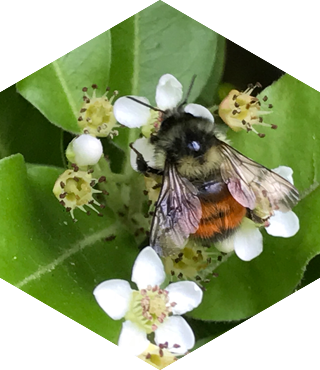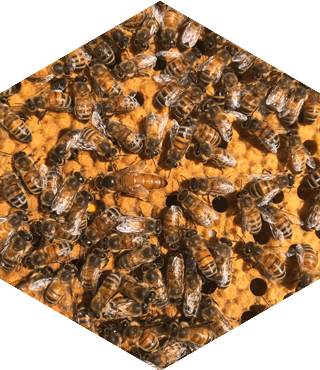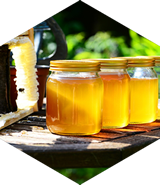Identification
Bee and Wasp Information and Identification
Wasps
YELLOW JACKETS
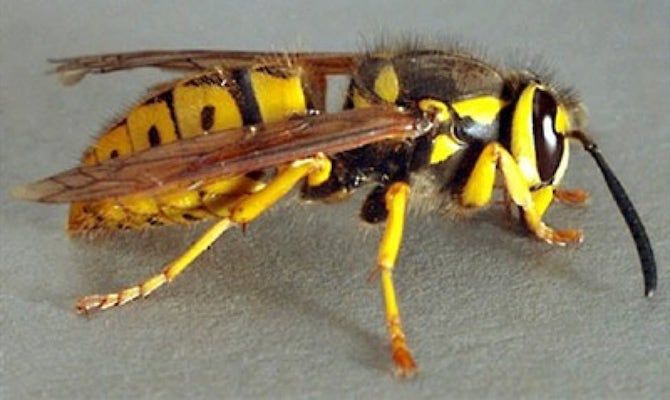
Yellow jackets are black-and-yellow wasps. Yellow jacket colonies can grow over the summer months resulting in colonies with many workers. When disturbed, they can be extremely defensive. The three most common species of yellow jackets in the Pacific Northwest are western yellow jackets (Vespula pensylvanica), common yellow jackets (V. vulgaris), and aerial yellow jackets (Dolichovespula arenaria).
Western yellow jackets and common yellow jackets build their nests in cavities. They are often found outside underground, in rockeries, and hollow logs, but can also nest inside in attics, crawlspaces, and wall voids. Aerial yellow jackets build hanging nests of paper-like material with concealed combs, and are typically found in trees, shrubs, and on house eaves. Yellow jackets have a painful sting and should be dealt with carefully.
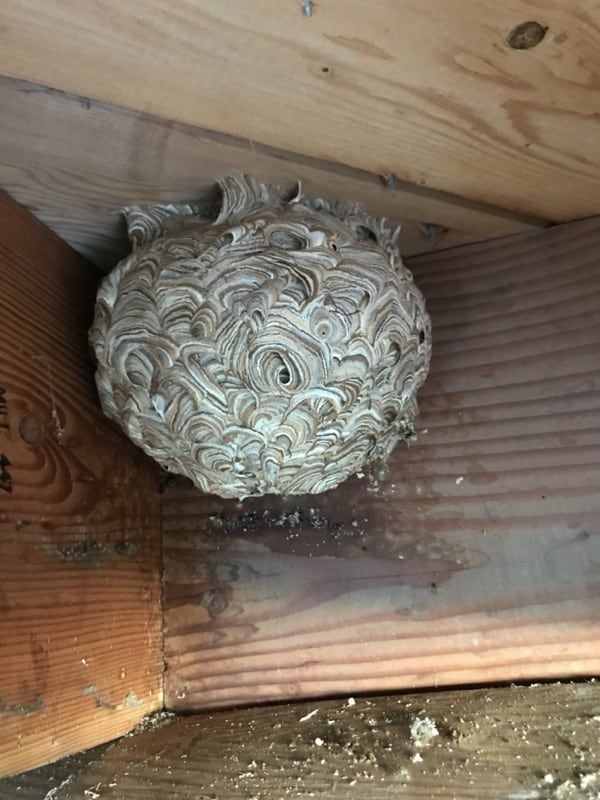
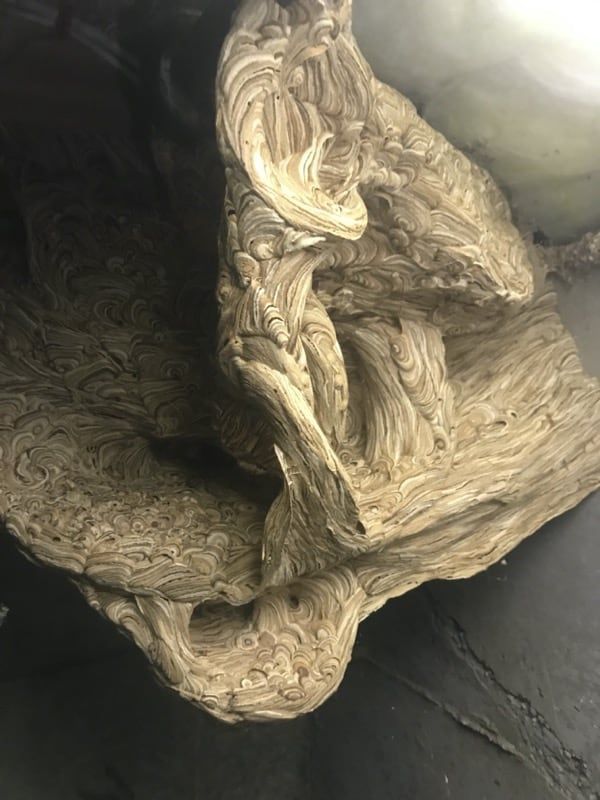
BALD-FACED HORNETS
Bald-faced hornets (Dolichovespula maculata) are social wasps with black-and-white markings. Bald-faced hornets build large paper hanging nests often located in trees and shrubs. They are usually oblong in shape and gray/tan in color. While not outwardly aggressive, they violently defend their nest when disturbed and have a very painful sting.
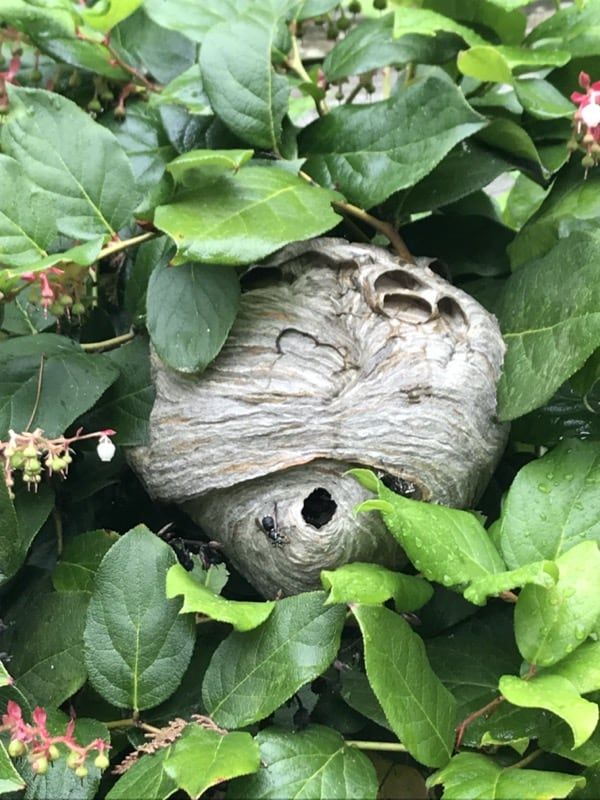
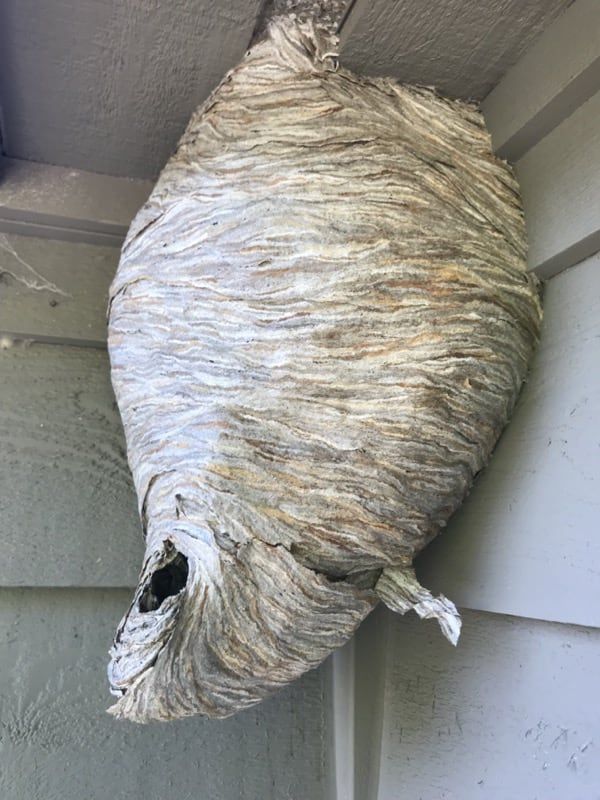
PAPER WASPS
Paper wasps (Polistes spp.) are extremely common wasps that build nests along house eaves, in sheds, and under vents and metal flashings on the roof. They are usually located on the south facing (hot) side and are fairly small in size and population. Nests are flat discs with open comb. Paper wasps are much less aggressive than yellow jackets but can still sting. Given space, they can often be left alone without causing any problems.
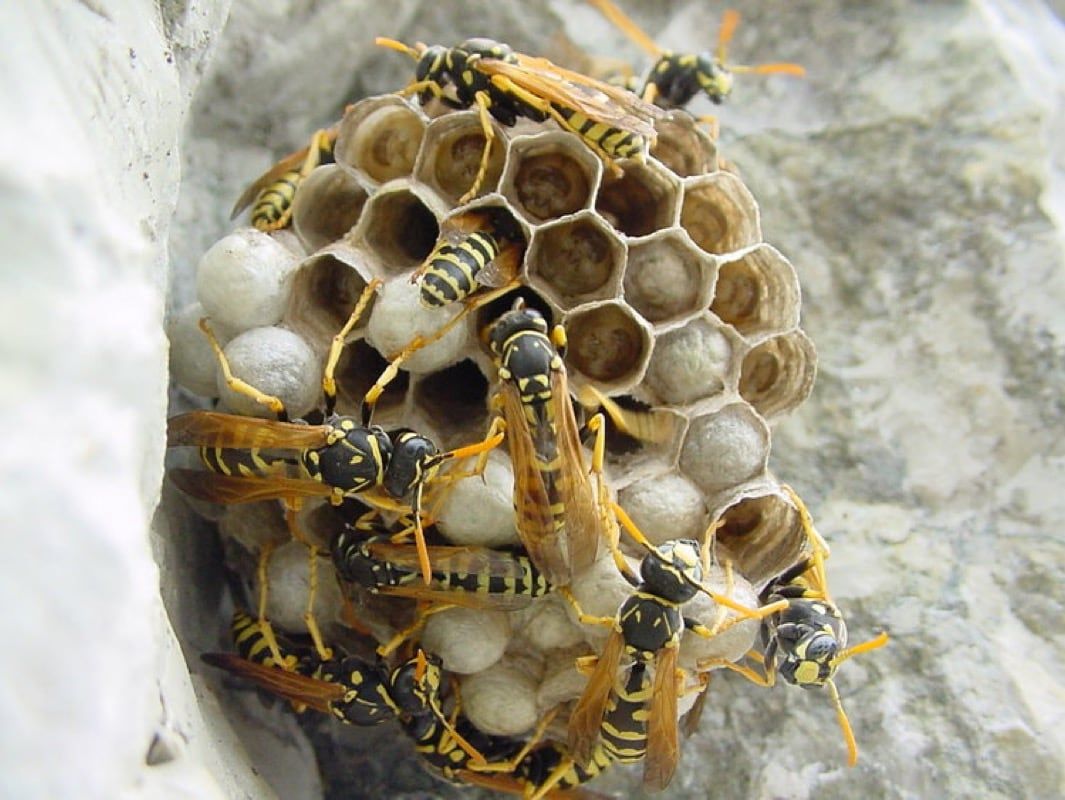
MUD DAUBER WASPS
Mud daubers are thread-waisted, solitary wasps. They build small nests out of mud in porches, walls, eaves, sheds, and attics. Mud daubers are dark blue/black in color. While a bit ominous looking, because mud daubers are entirely non-aggressive and do not build large colonies, if at all possible, it is best to leave these alone and simply scrape away the nest after the new wasps hatch out.
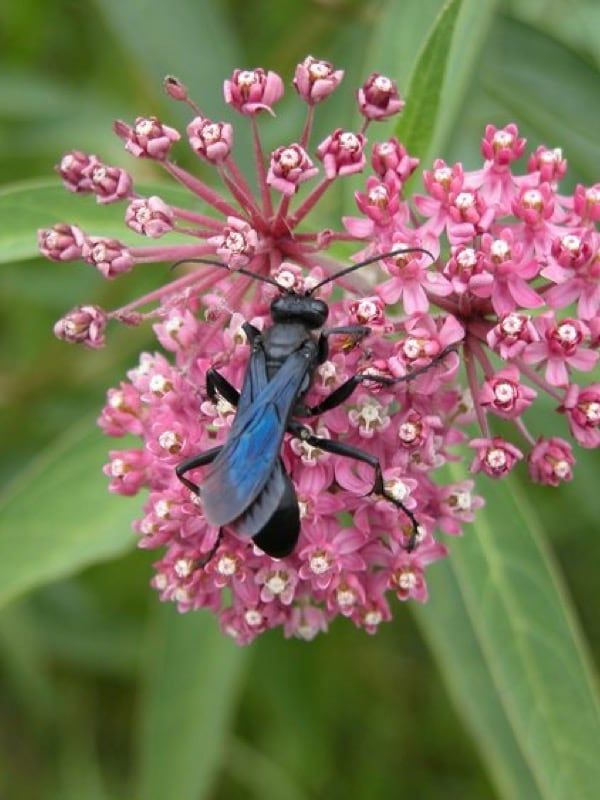

Bees
HONEYBEES
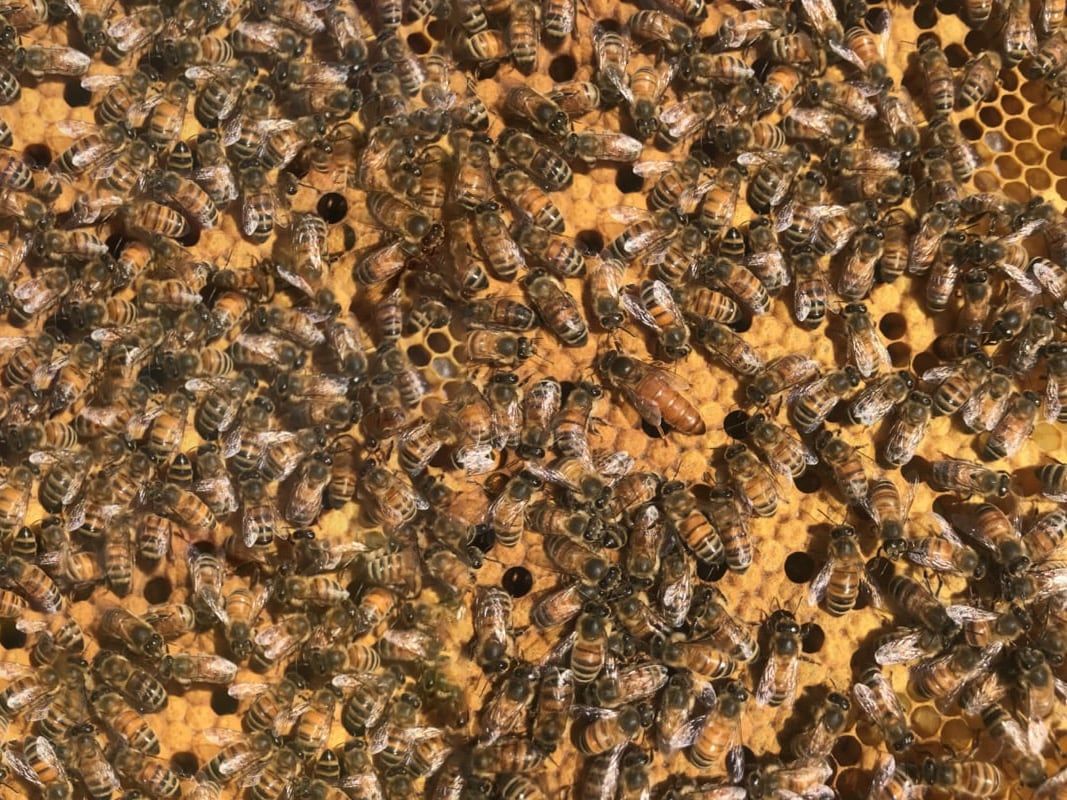
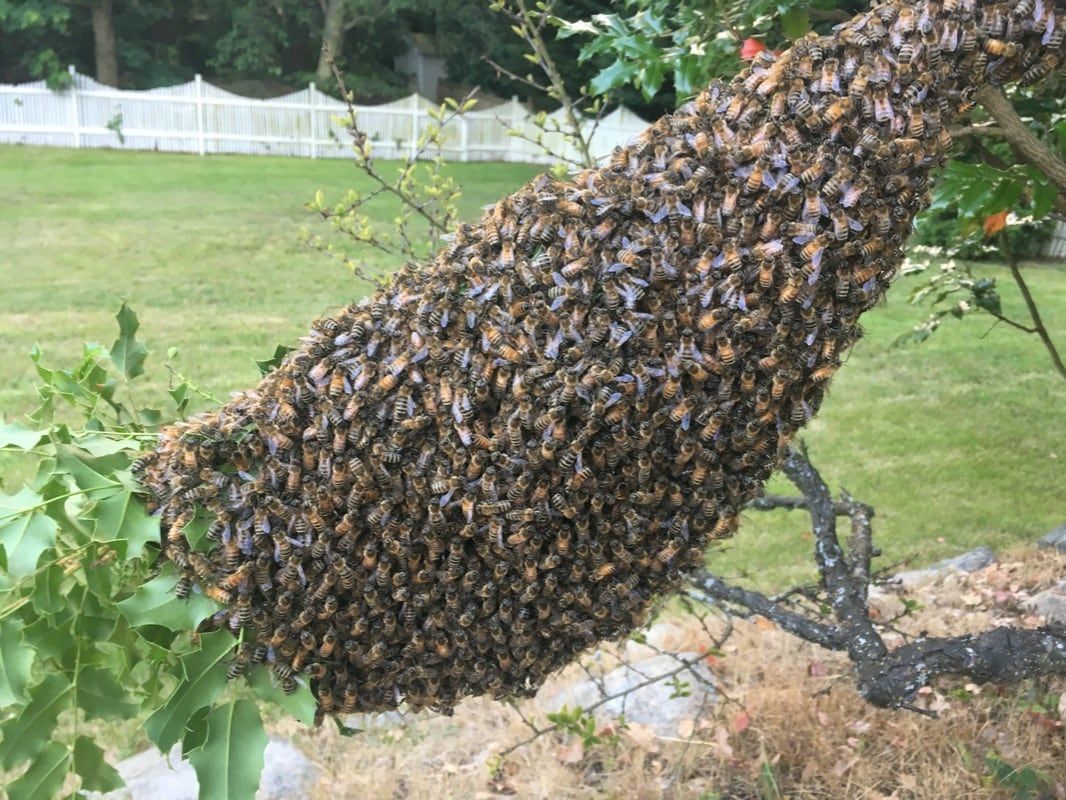
Honeybees (Apis mellifera) are the most well-known and beloved pollinator in the US. Honeybees spend the summer collecting and storing nectar and pollen to feed on through the winter. Unlike wasps, honeybees are perennial and, if the stars align, a colony can survive for years. Pesticide use, loss of quality forage, and parasites have made life difficult, but the growing interest in backyard beekeeping has increased colony numbers in cities and suburbs. Beekeepers typically keep honeybees in hive boxes, but honeybees also nest in other enclosed spaces, including hollow trees and house walls. In the springtime, honeybee hives will split off in swarms of thousands of bees to establish new colonies. With a lack of hollow trees in cities, those swarms not controlled or collected by beekeepers often end up in hollow house walls and chimneys.
* Beekeepers, please set up bait hives to capture your swarms. These removals are often difficult and expensive for your neighbors.
BUMBLEBEES
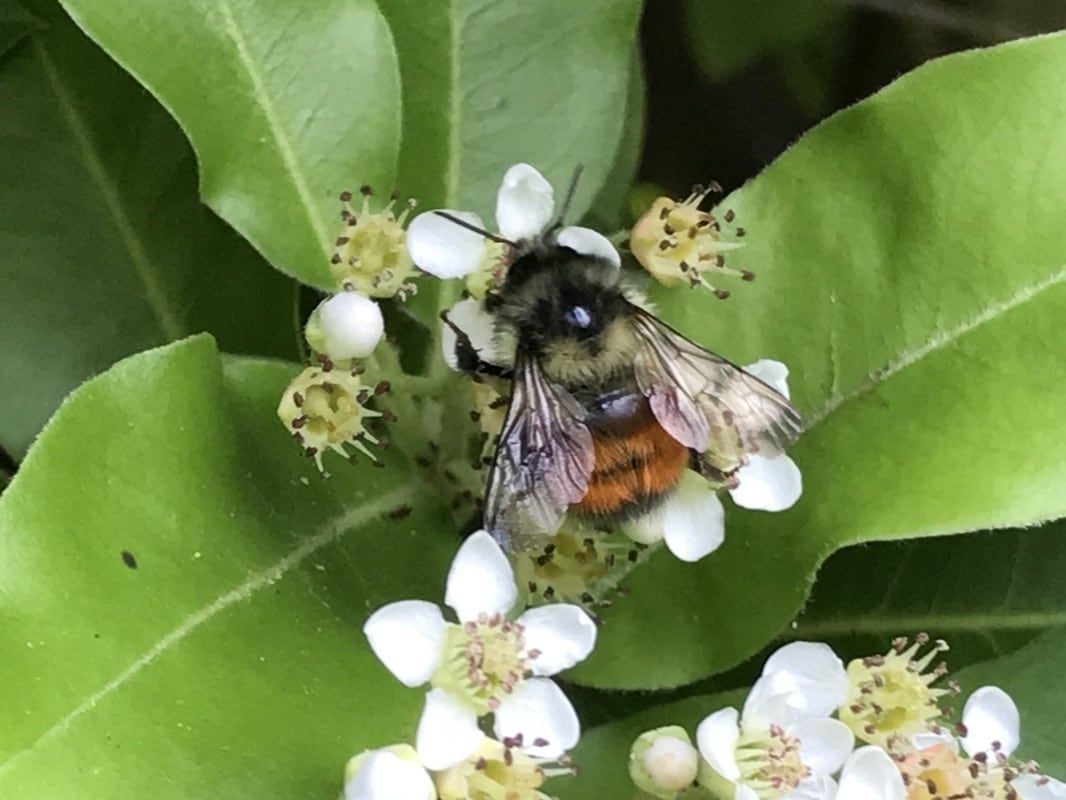
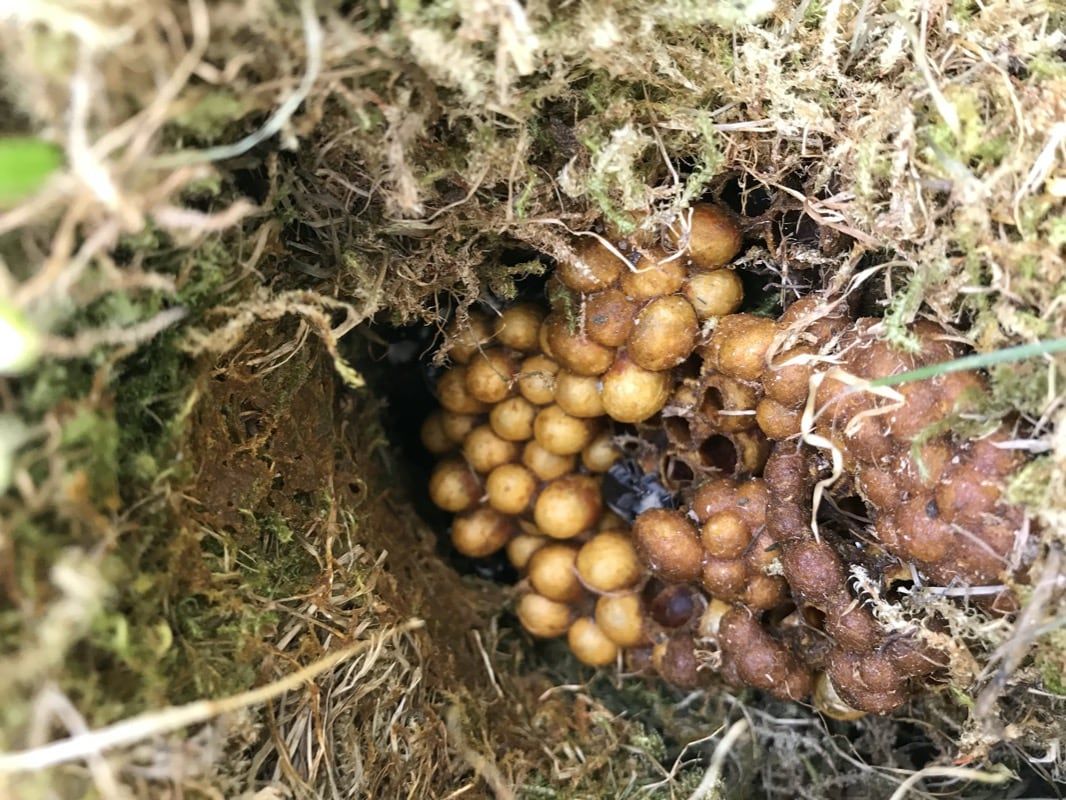
Bumblebees (Bombus spp.) are another important pollinator. There are over a dozen species of bumblebees that live in the northwest, and all of them provide vital pollination. Bumblebees are opportunistic nesters that do not make their own nesting material. They often utilize abandoned rodent burrows and commonly nest in old birdhouses and compost piles. They are well adapted to our NW environment and can often be observed foraging at flowering plants in cold wet weather. Bumblebees are not very aggressive and sting only on rare occasions when defending their nests. For more information on bumblebees, check out
https://www.fs.fed.us/wildflowers/pollinators/documents/BumbleBeeGuideWestern2012.pdf
OTHER BEES
There are many other species of bees in the Seattle area, including mason bees, sweat bees, mining bees, leafcutter bees, and cuckoo bees. A good resource for more information is found at https://www.arboretumfoundation.org/?s=getting+to+know+northwest+pollinator
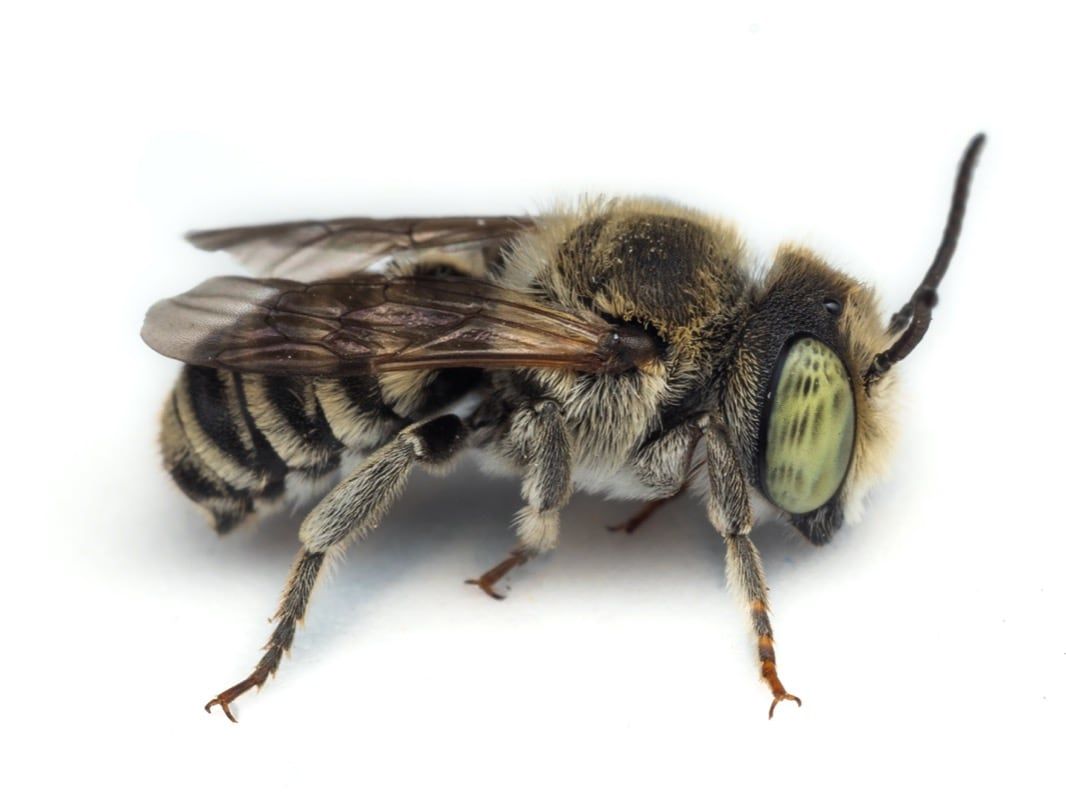
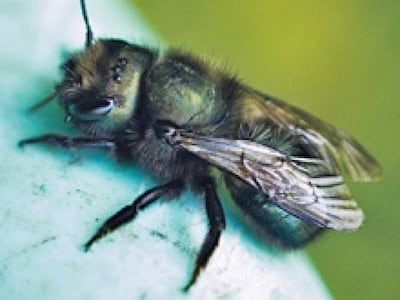
Month-by-Month Bee and Wasp Guide
January - February
Honeybees are the only species in our region that overwinter as an active colony. On warm winter days honeybees will take cleansing flights. If you see groups of bees emerging from a hole in a wall or a tree during these winter months, you have probably located a honeybee hive.
Paper wasp queens and yellow jacket queens hibernate over the winter. Occasionally, queens of these species can be found hovering in houses by windows or lights. They may have been hibernating in your house or perhaps under the bark of some firewood. When they warm up they will sometimes fly and are attracted to light.
March - April
Honeybees that have survived the winter begin to forage on warm days. In early spring, lots of bees coming and going from a hole in a building or tree is likely a honeybee colony
Yellow jacket queens trapped inside the house can be found around windows and lights as they begin to warm up, come out of hibernation and try to get outside. Paper wasp queens overwinter together in small clusters on or near the nests from the previous year. As they warm up and move around they become noticeable - most often, in the eaves of a roof, in sheds, and under vents and flashing.
Bumblebee queens emerge from hibernation in early spring. They are often seen flying around checking out spots for potential nest sites. Birdhouses with old nests in them are prime bumblebee nesting sites.
May
Honeybee colonies are growing rapidly. May is when honeybee colonies are most likely to swarm. If you see/hear a cloud of bees flying through the air or notice a large cluster of bees on a branch, fence, or the like, you have likely found a honeybee swarm. Bees are very docile when they swarm and although it is quite scary for some people, they pose very little threat. Call a beekeeper to come collect the swarm. Everyone benefits – including you, the bees, and the beekeeper. Most beekeepers will not charge to come collect a swarm that has not already inhabited a structure, as they benefit from adding bees to their apiary. I will come collect honeybee swarms for free, and Puget Sound Beekeepers has a list of local beekeepers on their website: https://www.pugetsoundbees.org/psba-swarm-list/
Paper wasps are continuing to move around on warm days in May. Overwintering clusters of queens begin breaking up and heading their separate ways to establish colonies. Old nests are reoccupied and new nests are started.
Bumblebees colonies are growing and becoming active. This is the time of year when bumblebee nests become evident in piles of yard debris, birdhouses, and in attics.
Aerial yellow jackets are the first yellow jacket species to take off in the spring. Visible nests start out as small gray egg shaped orbs that grow surprisingly quickly.
Mason bees and the like can be seen flying around small holes in the ground, in walls, or from behind shingles. They are often seen emerging from the weep holes (small rectangular holes) at the bottom corner of windows.
June
Honeybee colonies are growing and swarms are still likely.
Paper wasps have established their nests by now and are raising young. Nests are flat shaped with exposed comb. Wasps can be seen sitting on the gray paper combs.
Aerial yellow jackets and bald-faced hornet colonies are growing quickly, The football shaped nests are grayish tan and are found in bushes, trees, and attached to buildings. Aerial yellow jackets will also nest in cavities like birdhouses and attics. Paper from the nest is often visible on the outside of the entrance.
Bumblebee nests are very active throughout June. They are found in birdhouses, attics, crawlspaces, old rodent burrows, compost piles, etc...
Many solitary bees and mason bees are active this month. They are harmless and should be left alone whenever possible.
July - October
Nests that are visible throughout the summer months:
- Paper wasps have flat nests of exposed comb (you can see the individual holes in the comb), often on the eaves of house or shed roofs.
- Aerial yellow jackets and bald-faced hornets have grey, football shaped nests with the entrance near the bottom. They can be found in trees, bushes, or attached to structures.
- Mud dauber wasps have small nests made of mud. They are gray/brown and usually somewhat rectangular and only a few inches across.
Bees or wasps that are likely if you cannot see a nest:
- Yellow jackets and honey bees, can be observed entering and exiting from holes in house walls. If the insects are flying behind vent screens into attic spaces and crawl spaces, chances are those are yellow jackets.
- Yellow jackets will also nest in the ground, boxes, sheds, retaining walls, cars, boats, bags, grills, hot tubs, etc. They are flexible and opportunistic (to say the least).
- Solitary bees and wasps can be found in the ground, walls, behind shingles and many other places.
November - December
All wasp species are annuals (the colony does not overwinter). Being annuals, most colonies of yellow jackets, paper wasps, and bald-faced hornets are finished by this time. If successful, they have produced new queens that will hibernate over the winter and start another generation in spring. Sometimes, as nests die off, yellow jackets living in house walls and attics can find their way into the living space. When this happens, it is best to try to figure out the entry point they are using to get into your living space, block it up (but do not block off the exterior entrance/exit), and wait until the nest dies off completely (which it will do on it’s own at this time of year).
Honeybees may still be seen on warmer days taking cleansing flights.
Pricing
For the first hour it’s $300, each additional hour $100, pro-rated to the quarter hour. Free removal of honey bee swarms (a mass of honey bees found on a tree, the ground, a bush… usually in the Spring) [...]
Bee Preservation
Given the delicate state of honey bees today, the opportunity to relocate colonies that have been surviving on their own is rewarding. While many honeybee colonies are failing, these “survivor colonies” may have [...]
Honey and Bees
I usually have honey for sale. If you would like some let me know when we schedule your job. My bees live around Edmonds and their honey is comprised of local flower and blackberry nectar. The honey is filtered [...]


